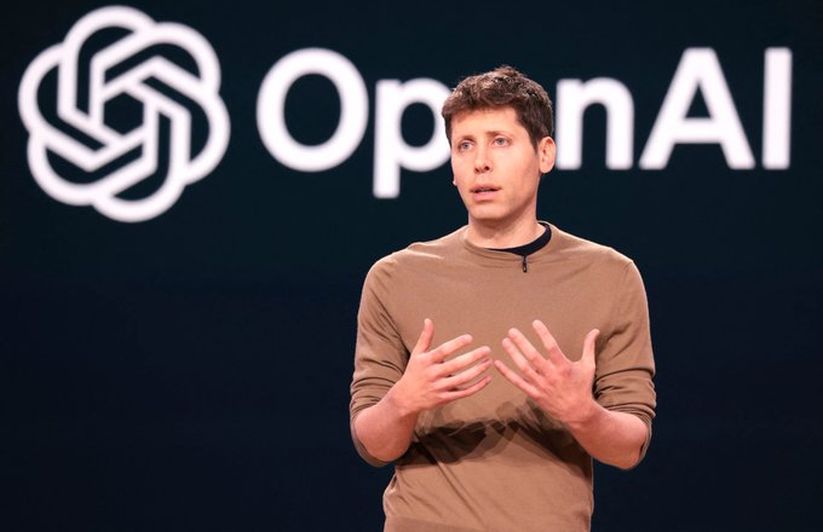Banks in talks for $38 billion loan for new data centers to supercharge OpenAI’s AI infrastructure ambitions

A consortium of major banks is in advanced discussions to arrange a staggering $38 billion loan for Oracle and data center heavyweight Vantage Data Centers — a clear signal of how high the financial stakes have climbed in the race to support OpenAI’s soaring compute demands.
The funding would accelerate the construction of dedicated sites for OpenAI as demand for generative AI continues to surge. Financial Times first reported the talks on Friday, citing people familiar with the negotiations. The proposed debt package would allow Oracle, a key cloud partner for OpenAI, and Vantage to scale out new hyperscale campuses purpose-built for the next phase of AI growth.
“A group of banks is in talks to lend another $38 billion for Oracle and data centre builder Vantage to fund further sites for OpenAI,” the Financial Times reported on Friday, citing people familiar with the matter.
This expansion is directly tied to OpenAI’s Stargate project, an audacious initiative aiming to roll out up to 10 gigawatts of AI infrastructure across the U.S. by the end of the decade.
Stargate: OpenAI’s Biggest Infrastructure Push Yet
Launched in January 2025, Stargate is OpenAI’s most ambitious infrastructure effort so far. Backed by early equity from SoftBank, Oracle, and Abu Dhabi-based MGX, the project is set to channel up to $500 billion over four years into a nationwide AI data center network. In recent months, OpenAI confirmed five new U.S. sites, putting the initiative ahead of schedule on its path to 10 gigawatts by the end of 2025.
One of the most visible developments is the Lighthouse campus in Port Washington, Wisconsin. Announced in October, the $15 billion-plus project will feature four hyperscale data centers delivering nearly one gigawatt of AI capacity by 2028. The site is designed around sustainability, drawing zero-emission energy from solar, wind, and battery storage via a partnership with We Energies. It also commits to being water-positive by recycling more water than it consumes and supporting biodiversity with native plantings and wildlife corridors.
Peter Hoeschele, OpenAI’s vice president of industrial compute, described the Wisconsin buildout as “another major step toward building the infrastructure that will help ensure everyone can benefit from AI.” The project is expected to create over 4,000 union construction jobs and more than 1,000 permanent roles, plus thousands of indirect positions across supply chains that include women-owned, minority-owned, and veteran-owned businesses.
Other Stargate locations include expansions in Texas, spanning Milam and Shackelford counties, and a major facility in Lordstown, Ohio, developed in partnership with SoftBank’s SB Energy unit. Combined, these sites are expected to support more than two million AI chips, forming the backbone for models that could reshape fields ranging from healthcare to entertainment.
At the center of all this is OpenAI’s massive cloud agreement with Oracle. Signed earlier this year, the $300 billion, five-year deal has been described as one of the largest contracts in tech history. Under the terms, OpenAI will start paying Oracle $60 billion annually from 2027 for compute services, while Oracle shoulders the initial buildout costs. Vantage, with backing from Silver Lake and DigitalBridge, adds the ability to deploy and scale data center capacity at speed.
A Financing Strategy Built on Other People’s Balance Sheets
What sets this $38 billion financing apart is how it fits into OpenAI’s broader approach to scaling without loading up its own balance sheet. OpenAI is keeping direct debt exposure low. Its $4 billion credit facility from last year remains unused, choosing instead to rely on partners to raise capital through loans and bonds.
A senior executive told the FT that OpenAI prefers to “leverage other people’s balance sheets,” and the numbers back that up. Nearly $100 billion in loans and bond financing has already been raised by partners tied to OpenAI-related data centers, often through special-purpose vehicles that isolate risk for lenders.
JPMorgan, for example, provided a $10 billion loan to fund OpenAI’s first U.S. data center in Abilene, Texas, being built by Crusoe Energy and Blue Owl Capital. Oracle signed a 17-year lease on the site to support the debt, with lenders stepping in to assume control if the project were to default. Blue Owl followed that by raising $18 billion from a group of Japanese banks for a site in New Mexico. CoreWeave, another supplier in OpenAI’s ecosystem, has committed $22.4 billion through 2029 for data center usage rights linked to expansions serving OpenAI.
The banks involved in the current talks remain unknown, though Reuters has confirmed that the negotiations involve a “group of banks.” If the deal moves forward, it would rank among the largest AI infrastructure financings to date, standing alongside a broader industry wave that has seen Amazon, Microsoft, Google, and Meta collectively plan up to $300 billion in data center spending just this year.
Jobs, Energy, and the High-Stakes Race for AI Capacity
Beyond the numbers, Stargate carries far-reaching implications. The plan, which has received White House backing, is projected to support hundreds of thousands of jobs across the U.S., from construction and chip manufacturing to logistics and energy development. The 4.5 gigawatts tied to the Oracle partnership alone roughly match the output of two Hoover Dams, creating the foundation for AI systems that could add trillions of dollars to the global economy.
The scale brings pressure points too. Massive energy requirements have raised concerns about grid strain and environmental impact, even as projects like Lighthouse lean heavily on renewables. Potential U.S. tariffs could raise construction costs by 5 to 15 percent, and investors are questioning the long-term sustainability of OpenAI’s $1.4 trillion in future compute commitments if demand shifts.
OpenAI CEO Sam Altman sees these investments as unavoidable. “Scaling frontier AI requires massive, reliable compute,” he has said.
As banks weigh whether to back the $38 billion loan, the decision will do more than fund new buildings. It will help determine whether OpenAI’s Stargate vision becomes the infrastructure backbone of the next era of AI — or one of the boldest bets in the history of tech finance.




